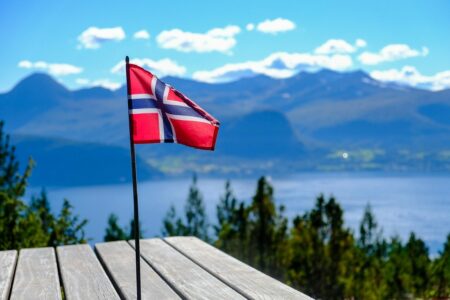At the Quad leaders’ summit in Tokyo last week, among the numerous topics discussed, the four partners emphasized the significance of common energy supply chains.
The leaders concurred on the significance of “clean energy cooperation” in “clean hydrogen” in particular. Hydrogen is likely to receive more attention as a result of the new Australian government’s commitment to combating climate change, especially given Australia’s links with Japan.
Even before the change in government, Japan and Australia collaborated on the development of clean energy. In April of this year, a consortium of Japanese firms, including Kawasaki Heavy Industries, J-Power, Iwatani Corporation, Marubeni Corporation, and Sumitomo Corporation, along with Australia’s AGL Energy, celebrated the success of a pilot project to transport hydrogen from Australia to Japan by the world’s first liquified hydrogen tanker, Suiso Frontier.
Prime Minister Fumio Kishida of Japan stated at the time that hydrogen was essential to Japan’s energy security and progress toward carbon-neutral goals, especially in light of energy worries stemming from the Russian invasion of Ukraine.
Hydrogen is gaining increasing attention as a potential energy revolution catalyst. Hydrogen is itself a colorless gas, but its classification varies based on its generation methods: carbon-free renewables (green), fossil fuel combined with a carbon-neutral carbon-capture and storage process (blue), steam methane reforming method (grey), coal or lignite coal (black or brown), thermal splitting of methane (turquoise), nuclear power (pink, purple, or red), and natural generation (yellow) (white).
In 2017, Japan launched its “Basic Hydrogen Strategy” with the goal of becoming a “world-leading hydrogen-based civilization.” The strategy emphasized that Japan and Australia would develop fundamental technologies to establish a “liquified hydrogen supply chain” that would pave the path for commercialisation.
Transporting liquefied hydrogen via water was crucial to this objective. Suiso Frontier, a liquified hydrogen carrier ship, was constructed in Japan based on this concept as part of a $500 million pilot project supported by the Japanese and Australian governments. The vessel left the port of Kobe in Japan on 24 December 2021, arrived at the Port of Hastings in Victoria, Australia approximately one month later, and returned to Kobe on 25 February 2022.
Prior to this triumph, both Tokyo and Canberra had made a number of agreements and declarations on the bilateral cooperation in renewable energy. By declaring a “Japan-Australia Partnership on Decarbonization via Technology” in June 2021, Japan and Australia vowed to work together to achieve their carbon-neutral targets under the Paris Agreement. The objective was to build on previous initiatives, including the “Hydrogen Energy Supply Chain” (HESC), the “Japan-Australia Energy and Resources Dialogue” (JAERD), and the “Australia-Japan Joint Statement of Cooperation on Hydrogen and Fuel Cells.”
The “Australia-Japan Clean Hydrogen Trade Partnership” was announced in January of this year, with then-prime minister Scott Morrison noting that “clean hydrogen is key to both Australia and Japan’s goals to reach net zero emissions while expanding our economies and jobs.” It has been reported that the Australian government has committed more than A$1.3 billion in the development of the domestic hydrogen energy industry, with liquified hydrogen made from brown coal and biomass at a hydrogen production plant at AGL Energy’s Loy Yang site in Victoria’s Latrobe Valley.
Due to the fossil fuel component of the product, critics have noted that “emissions from hydrogen generated from brown coal are twice those of natural gas.” A group of Australian energy specialists warned that carbon capture and storage (CCS) technology is “technically complex and expensive” and that high carbon capture rates are not guaranteed, meaning that hydrogen liquified by such methods cannot be “really pure.” Other analysts have suggested that Japan’s carbon-recycling policy is a “risky wager,” citing the country’s energy strategy, which includes the construction of additional coal plants.
It is one thing to overcome the technological obstacles of transporting liquified hydrogen. The acquisition of hydrogen from Australia may also not be the most economical option. However, from Tokyo’s standpoint, Australia is a solid strategic trading partner.
Notably, Japanese corporations have tried to collaborate with Australian corporations on the commercialization of “green hydrogen” energy. Japan’s Sojitz Corporation said in January that it would collaborate with Australia’s CS Energy on a demonstration project to transport green hydrogen produced from solar power in Queensland to Palau for use in small fuel cells as backup power sources.
The Pacific island nation aims to generate 45 percent of its energy from renewable sources, and the Japanese Ministry of the Environment is providing financial support for this initiative. Similarly, in April, Osaka Gas stated that it would provide project management and technical and engineering support for a A$10.75 billion “green hydrogen project” in Australia.
While the conflict in Ukraine has heightened Japan’s energy security concerns, it does give an impetus to diversify fuel supplies. Significant economic potential exists for a “quasi-alliance” between Japan and Australia in the area of energy security cooperation, particularly clean hydrogen energy. Priority should be given to the chance to create a hydrogen supply chain network in the Indo-Pacific.
Author Daisuke Akimoto.








